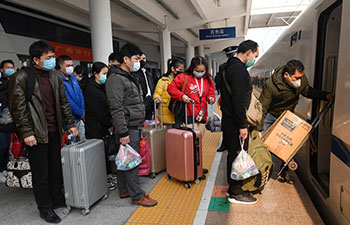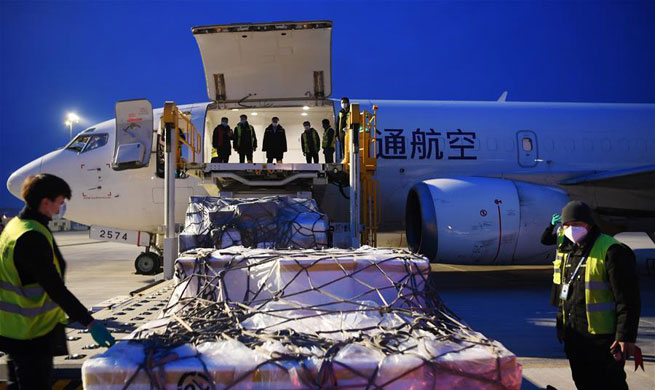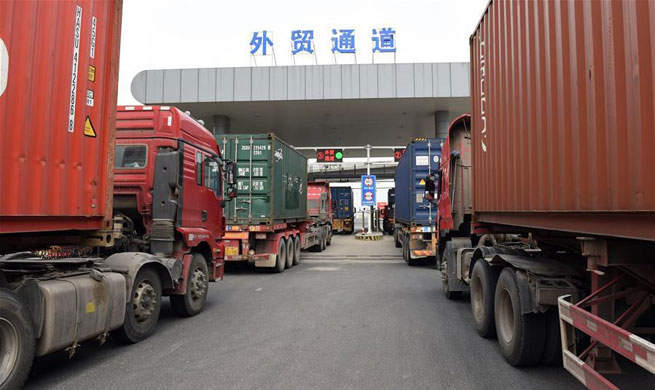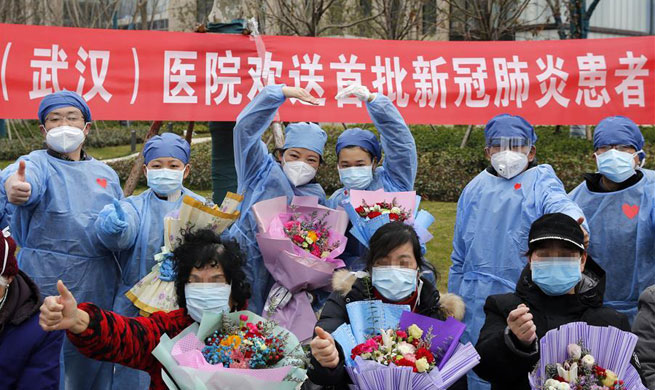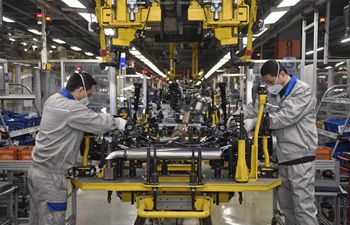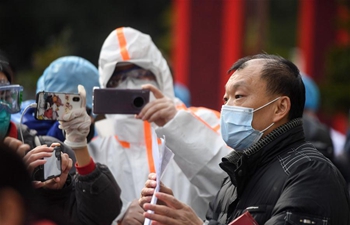BEIJING, Feb. 20 (Xinhua) -- Maintaining sufficient liquidity coupled with lower funding costs is one of the priorities of China's recent counter-cyclical adjustment policies, demonstrating its resolve to provide a "blood transfusion" for the real economy amid the coronavirus outbreak, analysts said.
China's one-year loan prime rate (LPR) came in at 4.05 percent Thursday, down from 4.15 percent a month earlier, according to the National Interbank Funding Center.
Under the revamped LPR mechanism to guide borrowing costs lower to support the real economy, the LPRs are based on rates of the central bank's open market operations, especially the medium-term lending facility (MLF) rates, which lowered by 10 basis points on Monday.
"Rather than short-term stabilization, the central bank shifted its focus to support firms' mid- to long-term financing needs," said Yan Se, a chief analyst with Founder Securities.
Since Feb. 3, the People's Bank of China (PBOC), the central bank, has injected over 3 trillion yuan (about 428.4 billion U.S. dollars) via open market operations.
Analysts said the liquidity injection will stabilize financial market expectations and boost confidence in the capital market, enabling financial institutions to provide more support for the real economy.
The coronavirus outbreak has hit small firms hard, with some saying they are suffering a severe cash crunch as their income dries up due to the temporary closures to contain the spread of the virus.
To tackle short-term cash flow challenges, the financial authorities enhanced targeted support for micro, small and medium-sized enterprises to steer their funding costs down.
The central bank issued special reloans of 300 billion yuan to provide preferential interest rate credit support to key enterprises engaged in epidemic prevention and control work.
The financial authorities also instructed lenders to roll over the loans of companies that have trouble repaying their debts as a result of the outbreak.
China's economy showed strong resilience, and the country had sufficient policy space to stabilize economic growth, said Pan Gongsheng, vice governor of the PBOC.
Pan said the central bank will continue to strengthen counter-cyclical adjustment and use policy tools such as targeted reduction of the reserve requirement ratios, relending and rediscounts to provide further support for the economy.
Proactive fiscal policies have been rolled out to buffer economic cooling, including expanding tax and fee cuts to benefit firms and individuals and increasing the issuance of local government special bonds.
The Ministry of Finance (MOF) has allocated 1.85 trillion yuan worth of new local government bonds ahead of schedule so far this year to shore up the economy.
"With the help of fiscal and financial support, the actual financing cost of enterprises has dropped below 1.6 percent. Therefore, enterprises will have more motivation and funds to expand production capacity, thus securing stable supply," said an official with the MOF.
The innate resilience of the Chinese economy alongside the use of counter-cyclical adjustments will help the country maintain stable growth despite the epidemic outbreak, said Lian Ping, chief economist at the Bank of Communications.
In 2019, the Chinese economy was generally stable with upbeat signs in manufacturing, retailing, foreign trade and financing, boding stable growth in the long term, said Lian.
His words echoed those of the International Monetary Fund (IMF) chief Kristalina Georgieva, who said the IMF is confident that China's economy remains resilient, and credited China for giving its economy a liquidity boost, along with cutting interest rates and providing stimulus to affected areas to prop up local economies.
Looking ahead, the chief analyst at China Minsheng Bank Wen Bin sees more easing steps, including further cutting the benchmark interest rates and the reserve requirement ratios to lower borrowing costs for the real economy.
"Banks can only provide a 'blood transfusion' for small firms, and whether they can recover and resume normal operations depends on their own hematopoietic mechanism," said venture capital investor Yang Shoubin, referring to the formation of the cellular components of blood.








